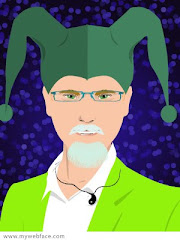Global Project: What Do Our Futures Hold?
Part 3 - Tearing Down Walls: Global Perspectives on Future Trends
Guiding Questions: What are the problems? What are the issues that make it a problem? What are the available solutions? What approach is being taken towards solutions in your Nation/Culture? Students from around the globe will collaboratively examine future trends in a variety of areas for the purpose of gaining a deeper understanding of the complexities of global issues and the fashioning (with a view towards implementation) of solutions to those problems.
1. Students will collaboratively develop a position or “white” paper regarding the topic/problem in consultation with experts and decision makers in the respective topics utilizing available means of synchronous and asynchronous communication. The final written product will follow professional guidelines regarding format/citation and will be submitted for publication to an appropriate publisher.
2. Students will collaboratively design and implement a summit to disseminate the results of the research, their proffered solutions or paths toward solutions and to attempt to draft a formal summit statement.
3. Students from each of the participating classrooms will develop a local community based project that either implements a proffered solution to a particular problem or serves the interest of service towards a solution the problem.
4. Students is the local groups will develop a forum to publish/present the projects to their respective communities (campus, district, neighborhoods, etc)
5. Each participating student will create a reflective product that captures their personal feelings toward the problem studied, the strengths and/or weaknesses of the solutions offered, the positive and/or negative aspects of the project, the process, or other developed by the students. This will include the manner and methods of sharing their product to the other participating students and classrooms, governmental entities….the world and beyond!
Relating to the following topic suggestions:
Hunger– Food Production and Distribution
Thirst – Water availability, quality, distribution, and access
Wellness – heath care delivery: quality, delivery systems, and access
Living Space – Living in a Hot, Crowded, and Flat World
Power - Who gets what and how? – The Structure and Functionality of political decisions - local, national, global, and inter-planetary (?)
Energy – Types, usages, costs, access
Transportation – Methods, Modes, and Destinations
Economy – How will production, productivity, consumption, distribution, exchange, and interaction occur?
Education – What will be the focus(es)? How will it be accessed? What will it look like?
Goal: Have at least one classroom on each of the 5 inhabited continents – Africa, Australia, Eurasia, North America, and South America. Place students and teachers on a matrix of related topics with each topic having a member from each of the participating areas. Those participating members will meet to discuss the topic and develop the group’s guiding questions and goals. All product and assessment rubrics, operational procedures and discussion methods, and celebrations are to be developed by the participating members and agreed upon by project leaders. (preferably a small group comprised of students from each participating area and 1-2 teacher advisors/facilitators.
Part 2 - Tearing Down Walls: Future Trends Primer and Global Project Skill Building
Guiding Questions: What is meant by Future Trends? What are the major themes of futuristic novels? Are there common threads discussed in the field of futures study; of future trend thinkers and writers? What is meant by Global Project? What skill sets are needed to fully and effectively participate in a Global Project? What does collaboration look like? What are the skills needed to collaborate – to collaborate effectively? What methods are available to facilitate collaboration across the boundaries of the classroom, the campus, the district and…the world? What issues and/or obstacles are raised as the collaborative distance is broadened?
Students will address the guiding questions in the format of distance book clubs. A cohort of teachers will be formed to discuss and refine the project? A list of futuristic teen novels will be made for students to select and form groups around. The goal is that each book club will be comprised of students from other (distant) classrooms. Once established, the clubs will internally set specific goals, timetables, assessment and product rubrics, presentation and celebration plans with the assistance and advice of their teacher advisors – within broad project parameters set by the participating teachers.
Learning – Students and Teachers
1. Use and operation of Wiki type platforms
2. Use and operation of Skype
3. Use and operation of Blackboard Collaborate, Go to Webinar, or other online group meeting platform
4. Creation, editing, management, posting and distribution of video products
Learning – Teachers
1. Creation, use, and maintenance of Classroom Management Portal creation, design, and maintenance
2. Nature and pedagogy of global projects in general
3. Reading, writing, and presenting pedagogy in the context of a global (distance) project
4. Possible “Curriculum 21” upgrades of traditional ELAR concepts in light of collaborative (distance) project possibilities
Learning - Students
Part 1 – Book Club Mechanics and Operation
Guiding Questions: How is the enjoyment of reading and development of reading skills enhanced by the book club format? What are the skill sets necessary for an effective Book Club experience? What do effective Book Club assessments look like?
Subscribe to:
Post Comments (Atom)






No comments:
Post a Comment